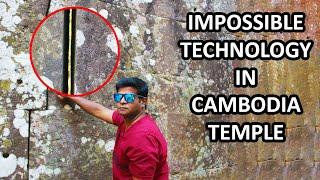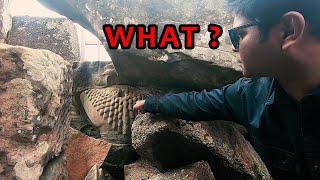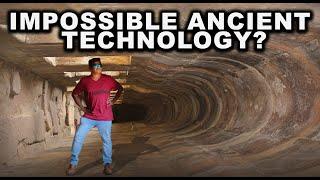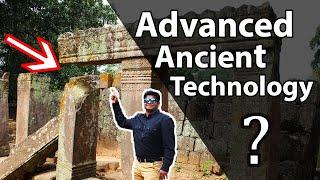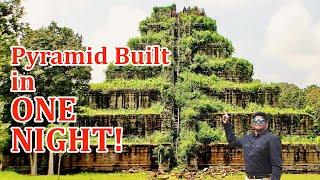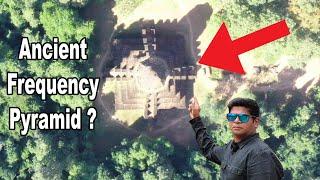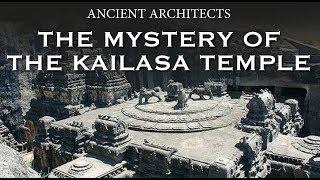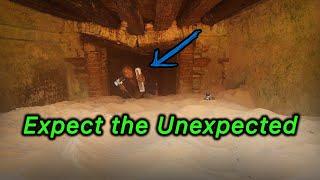Secret Science Hidden behind Ancient Holes? Mystery of Preah Vihear Temple, Cambodia
Beschreibung
Instagram................ https://instagram.com/praveenET
Twitter...................... https://twitter.com/IamPraveenMohan
Facebook.............. https://www.facebook.com/praveenmohanfans
Website.................... https://www.phenomenalplace.com
https://www.youtube.com/watch?v=t9jDovSaVwk
Hey guys, in the last video, I showed you strange holes drilled into many of the stone blocks of this 1000-year-old temple known as Preah Vihear in Cambodia. There are many different sizes of holes cut into the rocks, and the purpose of these holes has been a mystery, until now.
To decode this, we need to look at these ancient floor tiles. Each tile is a square slab of sandstone, but in the center, there is a circular hole. Surprisingly, these holes are not present in one or 2 slabs, or even some tiles, this is what we see in this entire area. Each square tile is of the same size as every other tile, and there is one hole drilled in the center of every tile. Were ancient builders mass manufacturing tiles, just like what we do today? How else can we explain this kind of replication? You can see that the entire area covered with tiles, has the exact same feature. If you walk on them looking at these tiles, it is like walking through a mass manufacturing setup. But why was the hole in the center necessary? Archeologists give a very simple explanation. Stone blocks are not easily moveable, because we cannot get a grip on them. So when ancient builders quarried stone blocks from mountains, they made holes, so that builders could insert a stick and move them easily. In fact, there are documentaries that explain how multiple holes were drilled in rectangular blocks, so they could be moved by men easily. This seems like a convincing explanation, But do all stone blocks have these holes? Let us go to another area in the same temple complex and look at the floor tiling.
Look at these stone blocks on the ground, no holes on them at all, but look what they have done to the surface. Here you can see this work, this is to make sure that you don't fall. (Rug for grip). Here, here and look.. all the way. This is all grip. This entire place is made of these rocks, where the surface was deliberately made rough. They either used sandpaper, acid treatment or something strange device to make it rough. This is incredible. Yes, today we have rugs, even archeology department uses rugs or carpets so people don't fall, but this rug is 1000-year-old guys, and it will last for eternity, unlike the modern rugs which will disintegrate after 10 years. This is why we love ancient builders right, they built things that even time can't destroy But if ancient builders had to put holes in the floor tiles in that area, why do these blocks don't have holes? How were these blocks moved without the holes?
I am not satisfied with the theory of mainstream archeologists; the holes must have a different purpose. When I examine the walls, the holes are very, very strange and go against these standard explanations. In documentaries, we are told that the holes are drilled through the blocks and wooden sticks are driven through them, and two people would push or pull on both sides. However, none of these holes go through the entire depth. They are very shallow, and I doubt if they are deep enough even to put a stick on them and make them move. To facilitate movement, holes must be drilled symmetrically, ie., either on the ends or at the very center. But the holes in these blocks are weird, there are a bunch of holes in one corner, while the other corner has no holes at all. Some blocks have a lot of holes, and other similar-sized blocks have very little number of holes or even no holes at all. And one more thing, these multiple holes defeat the purpose, the temple walls are supposed to be ornate and are supposed to look good. The holes actually make them look bad. So the holes definitely served some other important purpose. But we don't know what it is.
But the mystery gets deeper as I explore another temple in the complex. There are some very very strange and unexplainable features. Look, these are not small little holes, they are huge, gigantic holes, not just one or two, but a series of them and they are drilled on the floor. These holes are too large for driving any stick and moving them, these holes had a very different purpose. And why so many holes?
Remember I showed you similar holes on the bedrock of Ellora Caves in India? Ellora caves also has these weird holes on the ground. Those holes were deliberately made for ventilation purposes for the secret underground city which lies underneath.
#Cambodia #AncientTechnology #PraveenMohan

